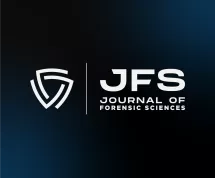Search
Explore content from JFS, ASB, the AAFS Newsfeed, and other content using the search bar or filters.
Forensic Anthropology: Terms and Definitions

Standard for Scene Response: Initial Response by Scene Investigators

Standard for Reports and Testimony inForensic Toxicology

Standard for the Documentation and Processing of Shooting Scenes

Best Practice Recommendation for Determining What Scene and Death Locations a Medicolegal...

Best Practice Recommendations for Internal Validation of Human Short Tandem Repeat...

Standard for Internal Validation of Human Short Tandem Repeat Profiling on Capillary...

Standard for Familial DNA Searching

Evaluating novel and conventional cell‐separation techniques for sexual assault...
Biological evidence from sexual assaults frequently includes few male cells (i.e., spermatozoa) and numerous female cells (i.e., epithelial cells). In practice, their genetic analysis typically involves separating the victim's cells from the perpetrator's sperm using co...
Post‐mortem cardiomegaly descriptor: Call for consistent criteria
Although the post‐mortem descriptor of cardiomegaly is an important component of understanding a sudden death, there is no unified definition. A recent survey reported the usage of heart weight correction models of Molina or Kitzman, for example, or simple step cutoffs such as 35...
ASB Newsletter – July 11, 2025

Submit Your Abstract for Presentation at Last Word Society
Mycology and palynology: Preliminary results in a forensic experimental laboratory in...
Forensic mycology and palynology are emerging disciplines that offer valuable tools for solving crimes, particularly in cases of enforced disappearances and clandestine burials. This study, conducted in Bogotá, Colombia, aimed to explore the potential contributions of mycology an...